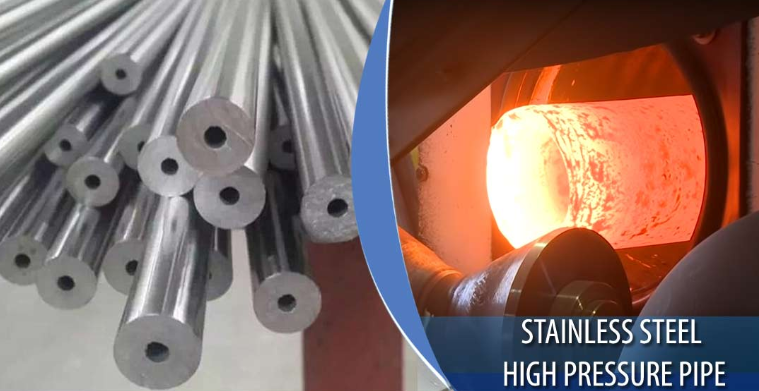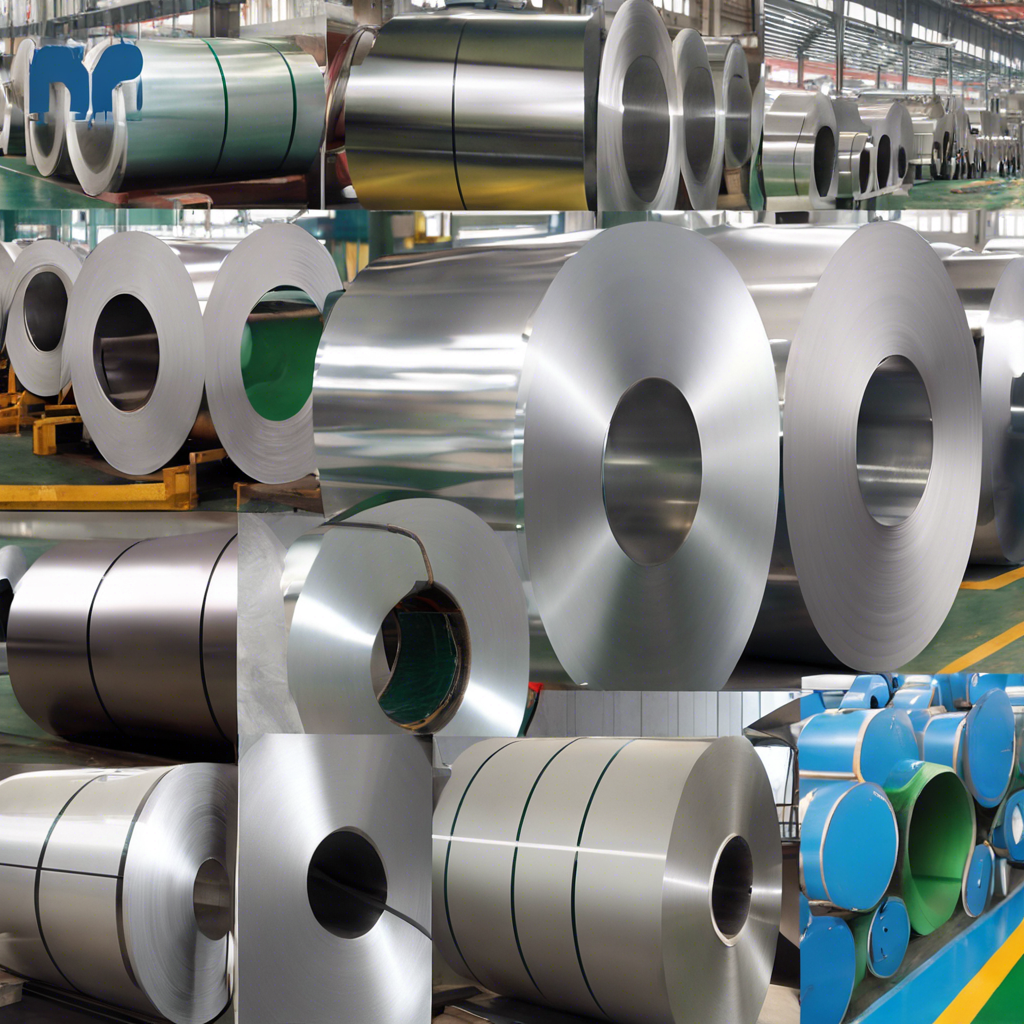


Views: 0 Author: Site Editor Publish Time: 2025-07-10 Origin: Site








What are the methods of welding stainless steel pipes? Stainless steel pipes are crucial in various industries, from automotive to construction, due to their durability and resistance to corrosion. But achieving these properties relies heavily on the welding methods used. In this post, we’ll discuss the different welding techniques for stainless steel pipes, including Electric Resistance Welding (ERW), Electric Fusion Welding (EFW), and more. You’ll learn which method best suits your specific needs.
Stainless steel welding is the process of joining stainless steel materials using heat or pressure. It creates strong, durable, and corrosion-resistant seams. Welding methods like Electric Resistance Welding (ERW) and Electric Fusion Welding (EFW) are commonly used for stainless steel pipes. Stainless steel is widely used in piping applications due to its excellent strength, corrosion resistance, and ability to withstand high temperatures. Its versatility makes it suitable for industries like construction, food processing, pharmaceuticals, and oil & gas. Proper welding is essential for maintaining the material’s corrosion resistance. Poor welds can compromise the steel's protective layer, allowing corrosion to set in. Ensuring the right welding technique helps preserve the steel's integrity and longevity.

Electric Resistance Welding (ERW)is a widely used and efficient method for welding stainless steel pipes, particularly in industries requiring high precision and cost-efficiency. The process works by passing an electric current through the metal edges, causing them to heat up to the welding point. Once the edges reach the desired temperature, pressure is applied to fuse them together, creating a strong, durable seam without the need for filler materials. This makes ERW a cost-effective solution for producing high-quality welded pipes. ERW is especially suitable for welding small diameter pipes, as it offers high-speed production, reducing both labor and material costs. The process is highly automated, allowing for continuous high-volume production with minimal human intervention. This automation is a key reason why ERW is favored in industries such as automotive manufacturing, construction, and infrastructure, where efficiency and reliability are crucial.
The ERW process typically involves four stages:
Preparation: Steel strips are unrolled, trimmed to the appropriate size, and cleaned to remove any contaminants.
Forming: The edges of the steel strip are brought together by rollers, preparing them for welding.
Welding:Electric current is passed through the edges, heating them until they reach the required temperature. The heated edges are then pressed together under high pressure, forming a strong, seamless bond.
Cooling: The welded pipe is cooled, solidified, and finished for further use. ERW is favored in industries where precision and cost-efficiency are essential, such as automotive and infrastructure projects.
Electric Fusion Welding (EFW) is a highly effective method used primarily for welding large diameter stainless steel pipes. In EFW, the edges of the pipe are heated using an electric arc, which melts the metal edges and allows them to fuse together when cooled, forming a strong and durable bond. This process does not require external filler material, making it particularly efficient for welding thicker, larger pipes.
The EFW process involves several key steps:
Preparation: The pipe edges are meticulously cleaned and aligned to ensure proper fusion. Any contaminants, such as oils or rust, are removed to guarantee a high-quality weld.
Fusion: An electric arc is created between an electrode and the pipe edges. The heat generated from the arc melts the metal, preparing it for welding.
Welding: The molten edges of the pipe fuse together under controlled conditions, forming a joint that is both strong and seamless.
Cooling: Once the welding is complete, the joint is allowed to cool and solidify, creating a durable, pressure-resistant bond. Key Difference from ERW:
No Pressure: Unlike Electric Resistance Welding (ERW), which relies on pressure to join the edges, EFW uses heat from an electric arc to fuse the edges together.
Consumable Electrodes: While ERW does not require filler materials, EFW often uses consumable electrodes, which add additional material to the weld, ensuring the joint’s strength and stability. EFW is preferred for larger pipes, particularly in industries such as water supply, gas pipelines, and construction, where robust, pressure-resistant, and long-lasting welds are essential. The method is especially effective in heavy industrial applications, providing reliable, high-quality welds with minimal distortion, making it ideal for large-scale projects.
Gas Tungsten Arc Welding (GTAW), commonly known as TIG welding, is a precision welding method used for stainless steel. It uses a tungsten electrode to create an arc, and filler material is added manually if necessary. The process produces clean, high-quality welds with minimal distortion, making it ideal for thin-walled stainless steel pipes. GTAW is preferred for its ability to produce clean, strong, and visually appealing welds, especially in applications requiring both structural integrity and appearance:contentReference . This method is often chosen when a high standard of cleanliness and appearance is needed.
The key steps in TIG welding include:
Preparation: Clean the pipe edges and ensure proper alignment.
Arc Formation: A tungsten electrode creates an arc between the electrode and the pipe.
Filler Addition: Filler metal is manually added to the weld pool, if needed.
Cooling: The welded area cools, forming a strong, precise joint.
TIG welding is widely used in industries like aerospace, food processing, and pharmaceuticals, where precision and clean welds are critical. It's particularly valuable for applications requiring minimal heat input, preserving the material's strength and corrosion resistance.
Gas Metal Arc Welding (GMAW), commonly known as MIG welding, is an automated welding process widely used to join stainless steel pipes and other metals. In MIG welding, a continuous wire electrode is fed through a welding gun into the weld pool, where an electric arc is created between the wire and the workpiece. This arc melts the wire, adding filler material to the joint and creating a strong bond. MIG welding is highly productive and versatile, making it suitable for both thin and thick stainless steel pipes. The process can be optimized by using different shielding gases, such as pure argon or a mixture of argon and carbon dioxide. These gases protect the weld pool from contamination, reducing the chances of defects like oxidation and porosity, and resulting in cleaner, stronger welds. MIG welding is particularly popular in industries like automotive, construction, and manufacturing due to its speed, reliability, and ease of use. It offers high deposition rates, which make it ideal for large-scale production. The flexibility of the process also allows for a wide range of materials and thicknesses to be welded with excellent results.
The key steps in MIG welding are:
Wire Feed: A continuous wire electrode is automatically fed into the weld pool by the welding machine.
Arc Formation: An electric arc is formed between the wire and the base material, melting the wire and creating the weld pool.
Filler Metal: The melting electrode wire adds filler metal to the joint, ensuring the weld’s strength and integrity.
Cooling: After the welding is complete, the joint cools and solidifies, forming a strong, durable bond.
MIG welding is highly valued in industries requiring high-speed production and precise control over the weld appearance and penetration, making it ideal for heavy-duty applications in automotive, construction, and infrastructure projects. Its versatility and efficiency make it a go-to choice for many large-scale industrial projects.
Stick Welding, also known as Shielded Metal Arc Welding (SMAW), is one of the most versatile and portable welding methods. It uses a consumable electrode coated in flux to create an arc between the electrode and the workpiece. The flux coating helps protect the weld from contamination by shielding it from the air.
The process involves several key steps:
Electrode Selection: The right electrode is chosen for the material being welded.
Arc Creation: An electric arc is formed between the electrode and the stainless steel pipe.
Filler Metal: The electrode melts, adding filler metal to the joint.
Cooling: The weld cools, creating a strong bond. SMAW is often used for repairs and in environments where other methods may be less practical, such as outdoor or remote locations. While it requires more skill compared to other methods, it offers flexibility and cost-effectiveness, especially for smaller projects.

The size and thickness of the stainless steel pipe play a major role in choosing the right welding method. For smaller diameter or thin-walled pipes, methods like Gas Tungsten Arc Welding (GTAW) or Electric Resistance Welding (ERW) are often preferred. For larger diameter pipes or thicker walls, methods like Electric Fusion Welding (EFW) are more effective due to their ability to handle higher heat and provide deeper penetration.
Different applications demand different weld qualities and strengths. For critical applications like aerospace or medical devices, high-quality, precise welds are essential. Methods like GTAW (TIG welding) offer excellent control over the weld and produce clean, strong joints. In contrast, methods like Stick Welding (SMAW) may be suitable for less demanding applications but might not provide the same level of precision.
Stainless steel’s main advantage is its corrosion resistance, and it’s vital to preserve this property during welding. Poor welding techniques can compromise this resistance, especially if too much heat is applied. Methods like GTAW are preferred in environments where maintaining the steel's corrosion resistance is critical. Additionally, outdoor environments or those with high humidity might require specific welding techniques to prevent corrosion.
When speed and cost are priorities, methods like Gas Metal Arc Welding (GMAW) or Electric Resistance Welding (ERW) are often preferred. These techniques are highly efficient and cost-effective, making them ideal for large-scale production. However, for projects requiring precision and quality over speed, methods like GTAW may be more suitable, albeit at a higher cost.
Proper preparation of the material before welding is crucial to ensuring strong, clean welds. Start by thoroughly cleaning the surfaces of the stainless steel pipes to remove any dirt, grease, or oxidation. Contaminants can weaken the weld and affect its strength. Here are some key steps in material preparation: 1.Cleaning: Use a dedicated stainless steel brush to clean the pipe surfaces. Avoid using the same brush for other materials, as this can cause contamination. 2.Edge Preparation: Ensure the edges of the pipe are properly aligned and smooth to prevent gaps during welding. This improves the quality of the weld. 3.Surface Treatment: If necessary, use a solvent to remove any oil or grease, which can interfere with the welding process. 4.Fit-up: Properly align and clamp the pipes in position to maintain consistent gaps, ensuring better penetration and joint strength. These preparatory steps help minimize defects and ensure a smooth, durable finish.
There are several welding methods for stainless steel pipes, including ERW, EFW, GTAW, GMAW, and MIG welding. Each method is suited for different pipe sizes and applications. Choosing the right method depends on factors like pipe size, strength requirements, and cost.
Quality control is crucial to ensure the welds maintain the pipe’s strength and corrosion resistance, ensuring long-term durability and safety.
A: The most common welding methods for stainless steel pipes include Electric Resistance Welding (ERW), Electric Fusion Welding (EFW), Gas Tungsten Arc Welding (GTAW), and Gas Metal Arc Welding (GMAW).
A: Factors include pipe size, thickness, required weld strength, corrosion resistance needs, and production speed/cost considerations.
A: Yes, MIG welding (GMAW) is commonly used for welding thicker stainless steel pipes, especially in high-volume production.
